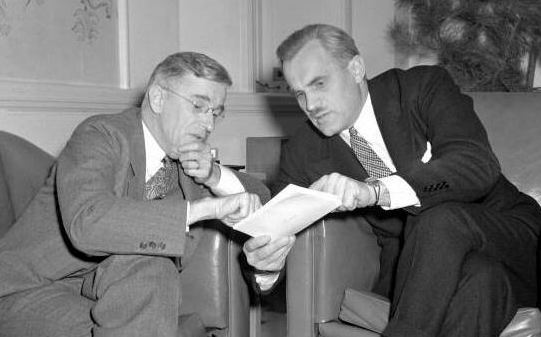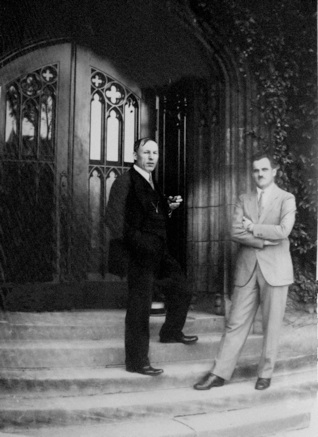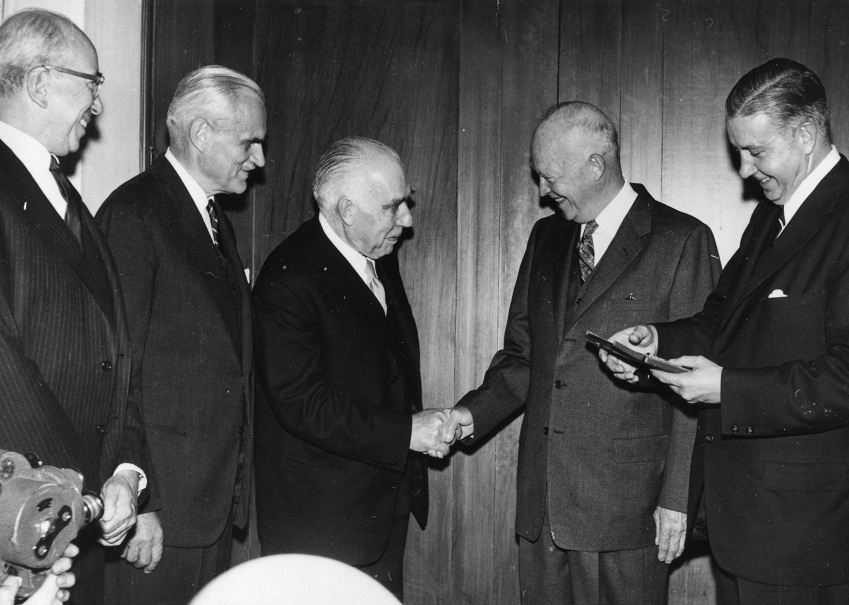<Back to Index>
- Physicist Arthur Holly Compton, 1892
PAGE SPONSOR
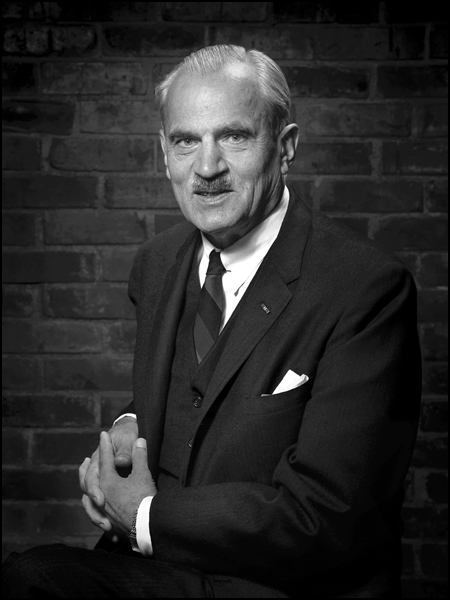
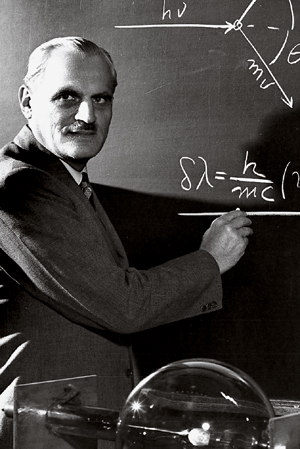
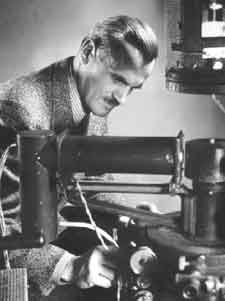
Arthur Holly Compton (September 10, 1892 – March 15, 1962) was an American physicist and Nobel laureate in physics for his discovery of the Compton effect. He served as Chancellor of Washington University in St. Louis from 1945 to 1953.
Arthur Compton was born in Wooster, Ohio, in 1892 to Elias and Otelia Compton. They were an academic family. His father Elias was dean of Wooster University (later The College of Wooster), which Arthur attended, and also became a member of the Alpha Tau Omega Fraternity. His eldest brother Karl also attended Wooster University, became a physicist, and was later president of MIT. His second brother Wilson Martindale Compton also attended Wooster University and became a diplomat and president of the State College of Washington, later Washington State University. All three brothers earned their Ph.D. degrees from Princeton University.
Around 1913, Arthur Compton devised a demonstration method for the Earth's rotation. In 1918, he began studying X-ray scattering. In 1922, while on faculty at Washington University in St. Louis, Compton found that X-ray wavelengths increase due to scattering of the radiant energy by "free electrons". The scattered quanta have less energy than the quanta of the original ray. This discovery, known as the "Compton effect," or "Compton scattering" demonstrates the "particle" concept of electromagnetic radiation and earned Compton the Nobel Prize in physics in 1927. Compton developed the method for observing at the same instant individual scattered X-ray photons and the recoil electrons (developed with Alfred W. Simon). In Germany, Walther Bothe and Hans Geiger independently developed a similar method.
n 1941, along with Vannevar Bush, head of the wartime Office of Scientific Research and Development (OSRD), and Ernest Lawrence, the inventor of the cyclotron, Compton helped to take over the then stagnant American program to develop an atomic bomb. Compton was placed in charge of the OSRD's S-1 Committee charged with investigating the properties and manufacture of uranium. In 1942, Compton appointed Robert Oppenheimer as the Committee's top theorist. When the Committee's work was taken over by the Army in the summer of 1942, it became the Manhattan Project.
Immediately after the Japanese attack on Pearl Harbor on December 7, 1941, Compton gained support for consolidating plutonium research at the University of Chicago and
for an ambitious schedule that called for producing the first atomic
bomb in January 1945, a goal that was missed by only six months. "Metallurgical Laboratory" or "Met Lab" was the "cover" name given to Compton's facility. Its objectives were to produce chain - reacting "piles" of uranium to convert to plutonium, find ways to separate the plutonium
from the uranium and to design a bomb. In December 1942, underneath Chicago's Stagg Field, a team of Met Lab scientists directed by Enrico Fermi achieved a sustained chain reaction in the world's first nuclear reactor.
Throughout the war, Compton would remain a prominent scientific adviser
and administrator. In 1945, he served, along with Lawrence,
Oppenheimer, and Fermi, as part of the Scientific Panel which advised
for the military use of the atomic bomb against Japanese cities.
Compton returned to Washington University in St. Louis, where he had served as Head of the Department of Physics from 1920 to 1923, when he was inaugurated as the university's ninth Chancellor in 1946.
During Compton's time as Chancellor, the university formally desegregated its undergraduate divisions in 1952, named its first female full professor, and enrolled a record number of students as wartime veterans returned to the United States. His reputation and connections in national scientific circles allowed him to recruit many nationally renowned scientific researchers to the university. Despite Compton's accomplishments, he was criticized then, and subsequently by historians, for moving slowly toward full racial integration, making Washington University the last major institution of higher learning in St. Louis to open its doors to African Americans.
Compton resigned as Chancellor in 1953, but remained on the faculty until his retirement from the full time faculty in 1961.
Along with being an academic his father was a Presbyterian clergyman. At
least for a time Arthur Compton was a deacon at a Baptist church. He
also played the mandolin and was a scientific glassblower.
Compton is buried in the Wooster Cemetery in Wooster, Ohio. The crater Compton on the Moon is co-named for Arthur Compton and his brother Karl. The physics research building at Washington University in St Louis is named in his honor. The University of Chicago Residence Halls remembered Compton and his achievements by dedicating Compton House in his honor. Compton also has a star on the St. Louis Walk of Fame. The Arthur H. Compton House in Chicago is listed as a National Historic Landmark.
Compton also invented a more gentle, elongated, and ramped version of the speed bump called a "Holly hump," many of which are on the roads of the Washington University in St. Louis campus.
NASA's Compton Gamma Ray Observatory was named in honor of Compton. The Compton effect is central to the gamma ray detection instruments aboard the observatory.
Compton was one of a handful of scientists and philosophers to propose a two - stage model of free will. Others include William James, Henri Poincaré, Karl Popper, Henry Margenau, and Daniel Dennett.
In 1931, Compton championed the idea of human freedom based on quantum indeterminacy and invented the notion of amplification of microscopic quantum events to bring chance into the macroscopic world. In his somewhat bizarre mechanism, he imagined sticks of dynamite attached to his amplifier, anticipating the Schrödinger's cat paradox.
Reacting to criticisms that his ideas made chance the direct cause of our actions, Compton clarified the two - stage nature of his idea in an Atlantic Monthly article in 1955. First there is a range of random possible events, then one adds a determining factor in the act of choice.
A set of known physical conditions is not adequate to specify precisely what a forthcoming event will be. These conditions, insofar as they can be known, define instead a range of possible events from among which some particular event will occur. When one exercises freedom, by his act of choice he is himself adding a factor not supplied by the physical conditions and is thus himself determining what will occur. That he does so is known only to the person himself. From the outside one can see in his act only the working of physical law. It is the inner knowledge that he is in fact doing what he intends to do that tells the actor himself that he is free.
